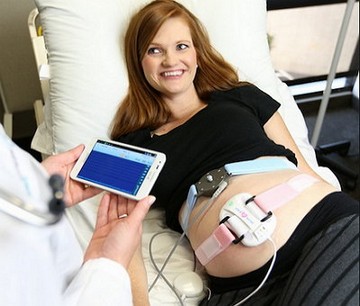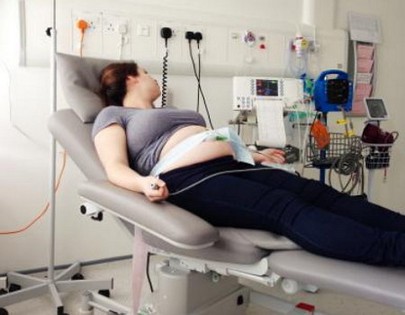Pregnancy Nonstress Test

Contents:
- The Stress Test of the Fetus to Uterine Contractions
- Reasons to Conduct the Test
- Preparation
- Procedure NST During Pregnancy
The Stress Test of the Fetus to Uterine Contractions
Contraction stress test is conducted in order to evaluate the state of the fetus in the conditions of poor oxygenation during the labour. This test monitors the fetal heart rate, which is a non-stress method of diagnosis. It can be performed in pregnancies over 34 weeks gestation.
The intrauterine infection causes insufficient oxygen levels and blood supply to the fetus for a short period of time. In some cases, the heartbeat slows down for a while. Such a change can be observed using an external device of cardiotocograph.
The contraction stress test is carried out through the intravenous infusion of oxytocin hormone that produces contractions. The nipples stimulation also contributes to the secretion of oxytocin. If the fetal heartbeat is reduced during false contractions, then during the real labour some problems may arise.
This test is usually prescribed to women with abnormalities in the biophysical profile. Biophysical profile is performed using ultrasound and defines physical characteristics of the fetus: amniotic fluid volume, fetal motor activity, muscle tone, breathing movements, uterine contraction. This test can give the exact data on the fetal state; it is preferable to make this test rather than a non-stress test. It is possible that you will have to make few tests.
Reasons to Conduct the Test

This test verifies the following:
- Changes in the fetal status while receiving less oxygen during labor;
- Whether the placenta supplies the fetus with all the necessary nutrients;
- If the results of the biophysical profile or the non-stress test are abnormal, then it is necessary to conduct contractions stress test.
Preparation
Like before most medical tests, you will be asked avoid drinking and eating for 4-8 hours prior the test. Before the test, you will need to empty the bladder. If you smoke, you will have to abstain from smoking for two hours prior the test, because smoking can reduce the heart rate and activity of the baby.
Procedure NST During Pregnancy
A doctor or a midwife and, or in some cases, a nurse or a lab technician can conduct this test. During the study, you will be asked to lie on your left side, and the doctor will put two belts with sensors on your stomach. One of the sensors measures uterine contractions, while another records the baby's heart rate. If within ten minutes the woman has three contractions, a smaller dose of oxytocin is introduced.